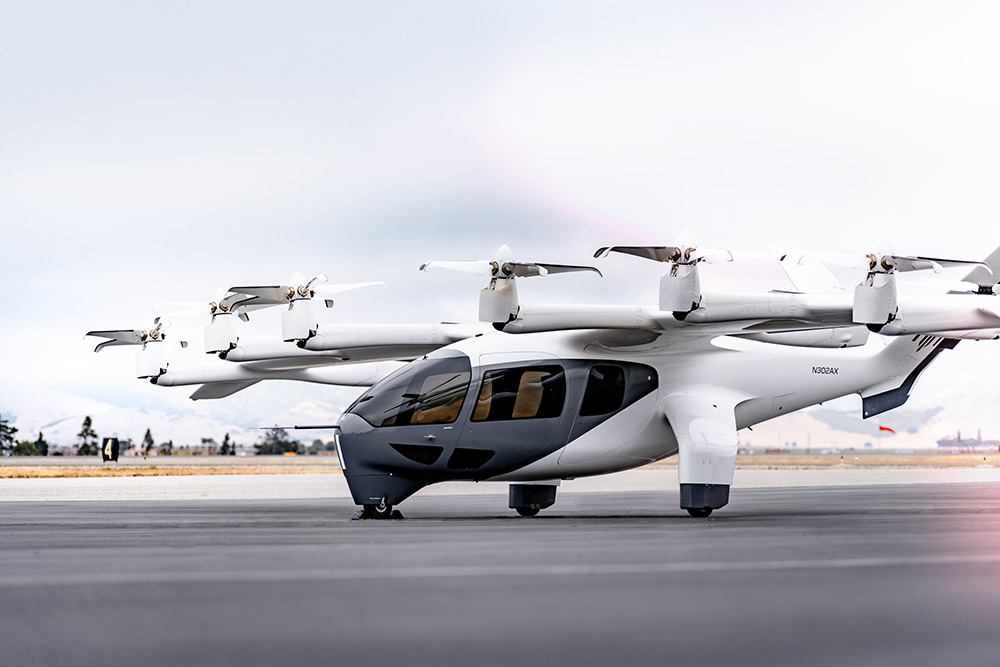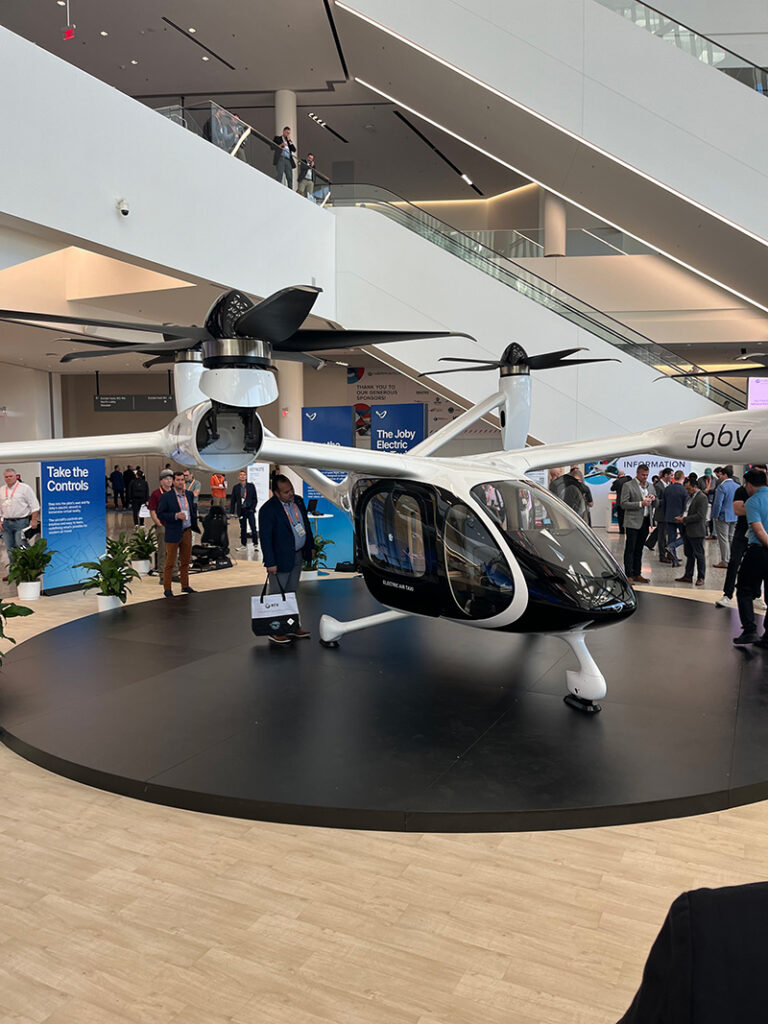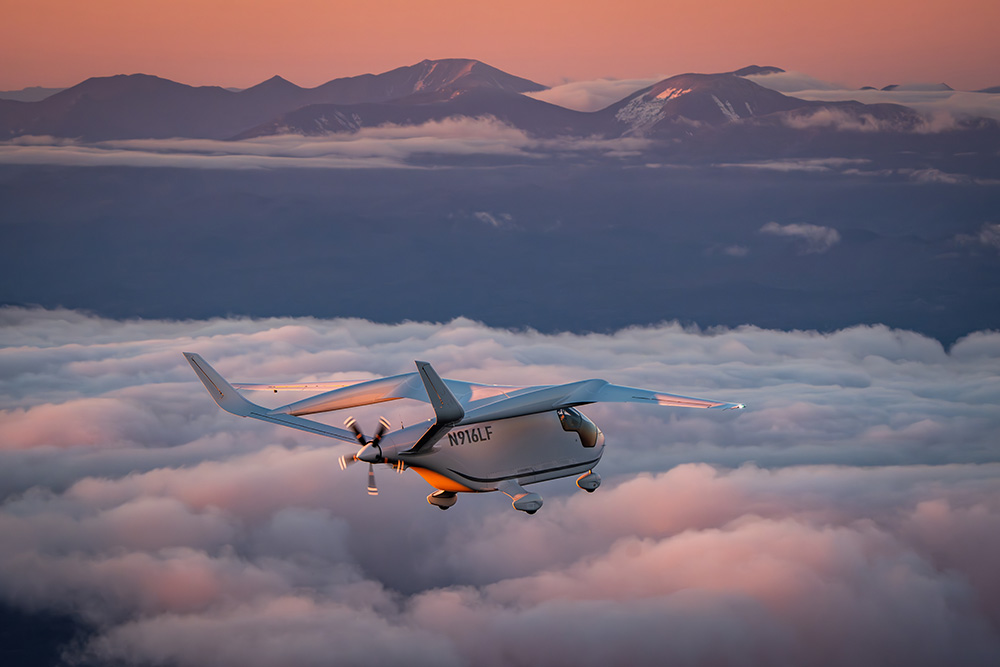The aviation industry stands at the cusp of a transformative era with the advent of Advanced Air Mobility (AAM). This groundbreaking sector promises to reshape urban transportation, logistics and various other applications through innovative aerial vehicles, particularly electric vertical takeoff and landing (eVTOL) aircraft. At the National Business Aviation Association’s (NBAA) 2024 Business Aviation Conference and Expo (BACE), industry experts and regulatory officials provided their insights into the challenges, opportunities and regulatory frameworks necessary for AAM’s successful implementation.
Defining the Future of Urban Air Transportation
Words matter. So what is AAM exactly? Paul Fontaine, Assistant Administrator for NextGen at the Federal Aviation Administration (FAA), eloquently described AAM as a “new form of aviation” that represents a transformational capability within the national airspace system (NAS). He introduced the concept of the “verticalization of the NAS,” a future where cargo effortlessly transfers between warehouse complexes and passengers swiftly move from airports to urban centers, all at a scale surpassing current helicopter operations.
Kristen Costello from BETA Technologies expanded on this vision, emphasizing that AAM encompasses a wide array of aircraft and use cases beyond just eVTOL and “air taxis.” BETA has strategically optimized their aircraft for payload and range, aiming to fulfill both cargo deliveries and the burgeoning regional air mobility (RAM) market.
Billy Nolen of Archer Aviation provided a historical perspective. He highlighted how AAM offers an opportunity to “reopen the aperture” for transportation options. He illustrated this potential with a compelling example: an Archer Midnight aircraft could transport passengers from Newark International Airport to Midtown Manhattan in a mere 10-15 minutes, a journey that typically takes 60-90 minutes by ground transportation.
Harmonizing Safety Standards for a New Era of Flight

As AAM operations inch closer to reality, the industry faces the challenge of harmonizing safety standards for short-range flights. Moderator Charlton Evans of End State Solutions kicked off this portion of the discussion by raising concerns about the unique operational characteristics of eVTOL aircraft. “These vehicles will be operating in urban environments with complex airspace and weather patterns. We need to ensure our safety standards account for these factors,” he cautioned.
The FAA aims to strike a balance, adapting existing regulations to accommodate new technologies without compromising safety. This approach requires close collaboration between industry players and regulators, with companies like BETA conducting extensive flight testing and sharing data to inform the development of appropriate safety measures.
From the regulator’s perspective, Bolter noted that recently published Special Federal Aviation Regulation (SFAR) addresses piloted aircraft capable of both vertical lift and forward flight within existing infrastructures such as Part 135 operations and Part 61 pilot certification. He
acknowledged the challenge of creating operating rules for aircraft that have not yet been certified.
Bolter explained the FAA’s aim to take a balanced approach. “We’re looking at how we can adapt existing regulations to accommodate these new technologies without compromising safety,” he explained. He said the SFAR provides a starting point, with a ten-year limit to allow for learning and adjustment as the industry develops.
On this last point, Fontaine noted the FAA continues working with manufacturers and operators to simulate operations at 5-6 different airports where early AAM flights are expected to take place. This proactive approach aims to identify and address potential issues before aircraft certification is complete.
Costello outlined BETA’s approach, which involves certifying their electric motor under Part 33, their conventional takeoff and landing aircraft under Part 23, and their eVTOL vehicle under the new 21.17(b) special class. She highlighted that BETA is already conducting test flights, has deployed charging infrastructure and is “sharing that data with regulators to inform the development of appropriate safety measures.”
Nolen reported that Archer is building its first six fully conforming aircraft and working through the certification process under Part 21.17(b). He expressed confidence in achieving commercialization by the end of 2025 and praised the FAA for providing a framework that utilizes a performance based approach that takes industry input into account. ”We’re not just waiting for regulations to be handed down,” he said, “We’re actively participating in the process, offering our insights and experiences to help shape standards that are both rigorous and practical,” he said.
Paul McDuffee of Cobham Consulting raised concerns about the operational readiness of these vehicles. He noted that while much focus has been on design and certification, there hasn’t been enough “heads down work” on making these vehicles routinely operable. McDuffee highlighted challenges such as integrating AAM vehicles into busy airspace, addressing microweather concerns at low altitudes and developing appropriate pilot training for the unique control systems of eVTOL aircraft.
All panelists agreed that as the industry moves closer to realizing the vision of AAM collaboration between manufacturers, operators and regulators will be crucial in ensuring safe, efficient and transformative urban air transportation.
Global Perspectives: FAA vs EASA Certification Approaches
The panel highlighted the nuances in aircraft certification standards between the FAA and the European Union Aviation Safety Agency (EASA). While the FAA has adopted a more performance-based approach, EASA has leaned towards more prescriptive requirements. This divergence presents both challenges and opportunities for manufacturers aiming to operate globally.
Industry leaders emphasized the importance of regulatory harmonization, which could streamline the certification process and ultimately benefit the entire sector. Costello from BETA shared her company’s experience navigating both regulatory frameworks. “We’ve found that while the end goal of a safe, certified aircraft is similar, the paths to certification can vary significantly between regulators,” she noted. She emphasized the importance of maintaining open communication with both agencies throughout the development process.
Archer’s Nolen echoed the potential benefits of regulatory harmonization. “As we look to operate globally, having a more unified set of standards would streamline the certification process and ultimately benefit the industry as a whole,” he said..
The FAA acknowledged ongoing efforts to align certification standards with international counterparts, aiming to establish a framework that ensures safety while nurturing innovation. Fontaine explained, ”We’re actively engaging with our international counterparts to find common ground and establish a framework that ensures safety while fostering innovation.”
Powering the Future: Battery Technology and Alternative Propulsion

The shift towards electric propulsion holds the promise of significantly reducing aviation’s carbon footprint, particularly for short-haul flights. However, this transition also presents new regulatory challenges and infrastructure requirements. Developing a robust charging network and ensuring a stable supply of critical components like batteries and electric motors will be essential for the widespread adoption of electric aviation.
The discussion delved into the current state of battery technology and potential alternatives for powering eVTOL aircraft. While energy density remains a key challenge, companies like BETA are optimizing aircraft design to maximize efficiency and range with current battery technology. Costello noted,”Developing a robust charging network is crucial for the widespread adoption of electric aviation. We’re not just building aircraft; we’re helping to create the ecosystem they’ll operate in.”
Simultaneously, the industry is closely monitoring advancements in battery chemistry and alternative power sources, such as hydrogen fuel cells. Nolen noted that Archer Aviation is developing “sophisticated energy management systems to optimize performance,” while also looking at future alternative propulsion systems. “While batteries are our current focus, we’re not ruling out other options like hydrogen fuel cells for future iterations. The key is to remain adaptable as technology evolves,” he said.
Fontaine addressed the FAA’s role in evaluating these new propulsion technologies. “We’re developing frameworks to assess the safety and reliability of these emerging power sources. It’s crucial that we have robust certification processes in place as the technology advances,” he explained.
McDuffee raised the significant issue of supply chain readiness. “As we scale up production of electric aircraft, ensuring a stable supply of critical components like batteries and electric motors will be essential,” he cautioned.
Embracing Omni-Transportation: Integrating AAM into Existing Infrastructure
The panel explored the concept of omni-transportation and the seamless integration of AAM into existing transportation networks. Industry leaders envision a future where ground and air transport work in harmony to improve overall mobility. This integration will require updating airspace management systems to accommodate increased low-altitude traffic while ensuring safety for all airspace users.
Nolen painted a vision of seamless integration. “We see AAM as complementary to existing modes of transportation. The goal is to create a network where ground and air transport work together to improve overall mobility,” he said. He explained how an Archer App would allow passengers to hail an Uber to a vertiport where they could hop on a Midnight aircraft and then disembark to take another Uber or walk on the other side.
Fontaine discussed the FAA’s role in facilitating this integration. “We’re working on updating our airspace management systems to accommodate increased low-altitude traffic while ensuring safety for all airspace users,” Fontaine said. He outlined the FAA’s vision for the future of airspace management, to move towards a more dynamic, data-driven approach that can accommodate a diverse mix of aircraft types and operations.
Bolter piled on about the importance of interoperability. “As we develop new systems for AAM, ensuring they can communicate and operate alongside existing air traffic management systems will be crucial,” he explained.
The Horizon of Aviation: Emerging Use Cases and Operational Transformations
As the aviation industry evolves, new use cases and operational transformations are emerging. Unmanned aircraft systems (UAS) are expanding their roles beyond delivery and inspection to areas such as agriculture, environmental monitoring, and emergency response. AAM also has the potential to revolutionize emergency medical services (EMS), particularly in congested urban areas or remote locations.
On the topic of EMS, Nolan noted, “The speed and flexibility of eVTOL aircraft could revolutionize medical transport, particularly in congested urban areas or remote locations.”
The future of cargo transport also looks promising, with electric aircraft poised to make short-haul operations more efficient and environmentally friendly. Costello stated, “Electric aircraft have the potential to make short-haul cargo operations more efficient and environmentally friendly. We’re already seeing interest from logistics companies,” she stated.
As these new technologies and operational models take shape, the industry must focus on the workforce needed to meet the evolving needs of this exciting new era. Evans emphasized this point, ”As these new technologies and operational models emerge, we need to ensure we’re training the next generation of aviation professionals to meet the changing demands of the industry.”
AAM is set to transform urban transportation and redefine the future of aviation. As regulations adapt and technology progresses, the aviation sector remains at the threshold of a new era that promises greater efficiency, a lower environmental footprint and improved mobility for communities worldwide.

